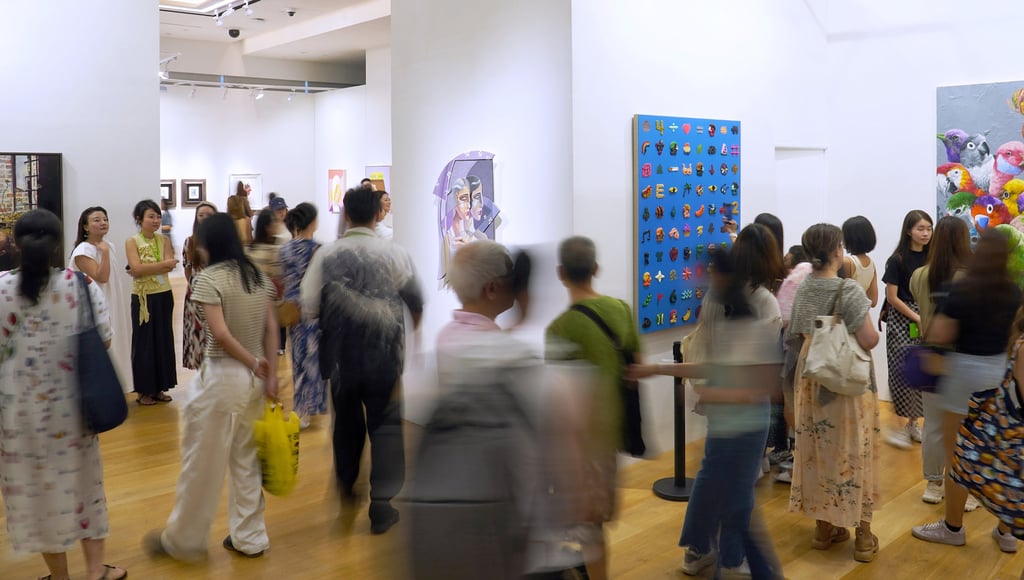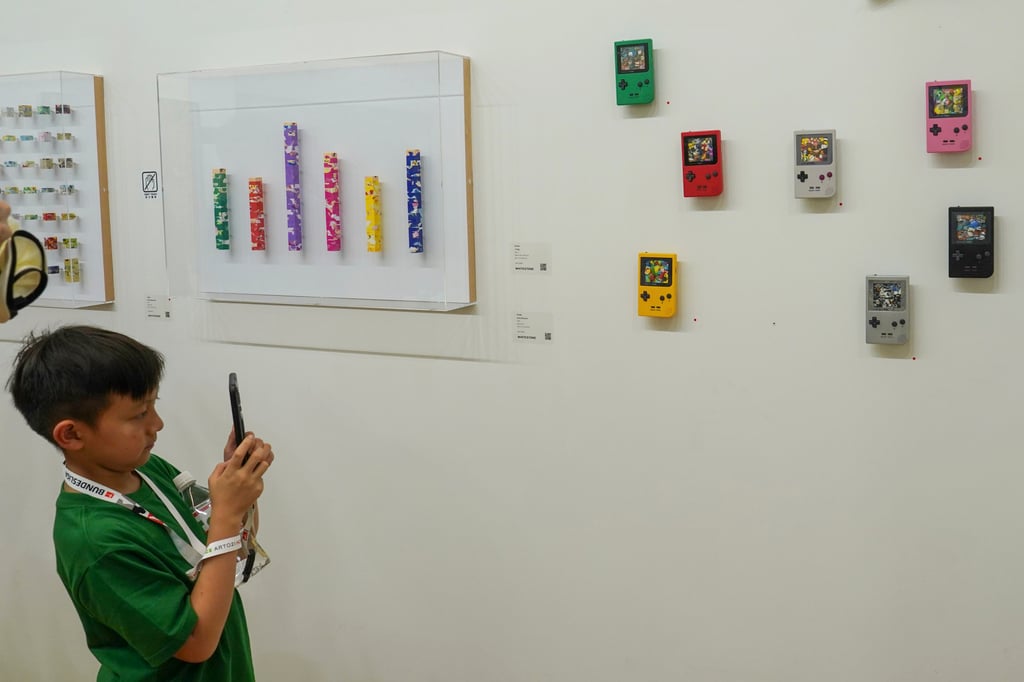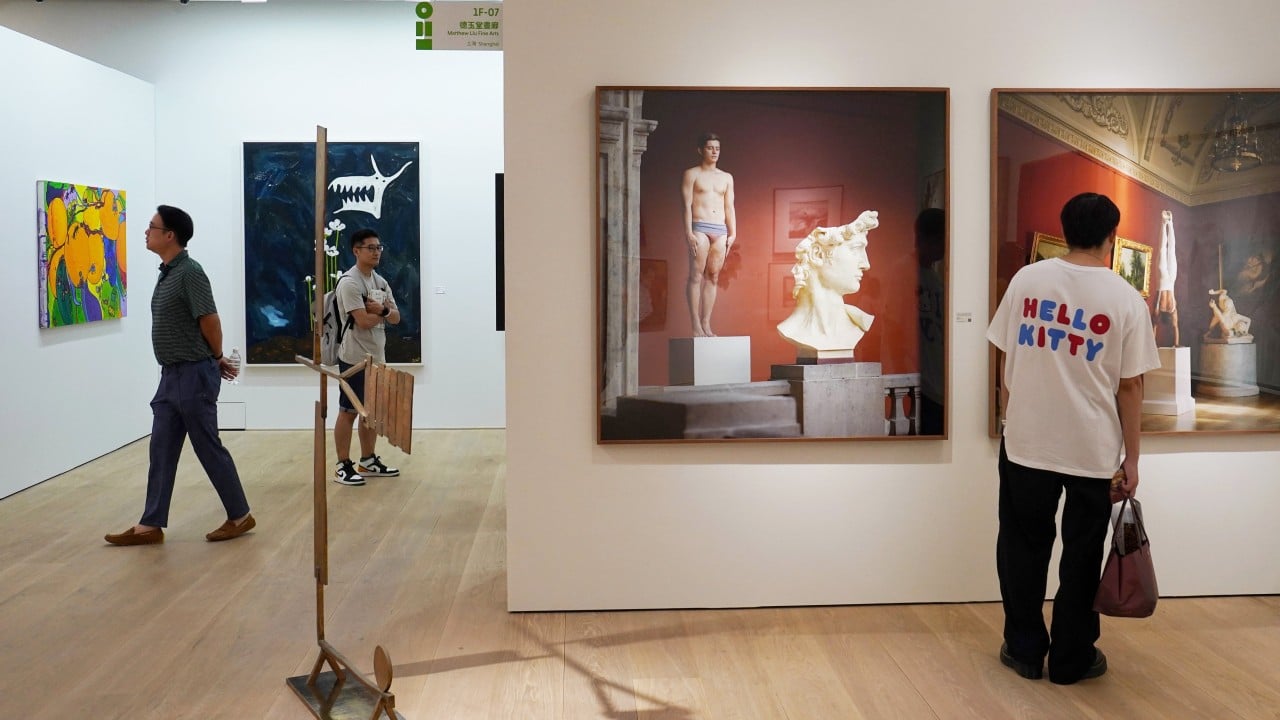An inaugural contemporary art fair had a strong debut in Hong Kong, with organisers reporting robust traffic and purchasing power, while revealing the most expensive piece sold for millions of yuan.
Co-founder of Shanghai-based Art021 David Chau said on Sunday he hoped the fair could become a long-running staple of the city’s art scene, playing a role in securing Hong Kong as an arts hub for the Global South, as well as new collectors hoping to enter the market.
The Art021 Hong Kong Contemporary Art Fair opened on Thursday at various venues across the city, including gallery pieces hosted at the WKCDA Tower in West Kowloon and videos at the Asia Society in Admiralty.
Chau said the attendance of 30,000 people for the initial three days had already exceeded expectations.
“Initially, we estimated that the main event would attract about 10,000, but it has already exceeded that. We are really happy with the turnout,” he said.
Founded in 2013, the Art021 fair – deemed by some as mainland China’s answer to Art Basel – was inaugurated in Shanghai and exponentially grew to achieve more than 1 billion yuan in sales revenue in the last three years, organisers said.
Chau expressed a goal to help position Hong Kong as a leading hub for art from the mainland and the Global South, including pieces from Africa, Latin America and Southeast Asia, enriching the city’s cultural landscape.
“We hope to attract galleries from the Global South to participate in our events, providing them with a platform that has historically been lacking,” he said, adding established events such as the annual Art Basel already had Western art covered.
“Hong Kong is uniquely situated as a financial and cultural centre, making it an ideal location for promoting Global South art.”
He also said Hong Kong had established itself as a leading art hub in Asia over the past two decades, providing increasing visibility for new initiatives.

Chau also expressed a strong desire to make the art fair a long-term, annual event, ideally spanning into the next “10, 20 and even 30 years”.
Organisers said the fair targeted non-traditional art collectors and enthusiasts this time, particularly young and new ones hoping to enter the market, as well as a number of celebrities and influencers who could help promote art culture.
Efforts were also made to promote the fair to the wider public to encourage better community participation.
“I think this is the type of work that we should do as a cultural hub,” Chau said.
He said he had heard one of the most expensive pieces sold so far was worth about 4 million to 5 million yuan (HK$4.4 million to HK$5.5 million), although he also noted a shift in mindset among buyers, who were focusing more on personal tastes and satisfaction, rather than the potential financial appreciation of an item.
Some participating galleries reported sales had exceeded expectations as of Sunday.
One of them, Shanghai-based Hwa’s Gallery, said it had sold all its works during a VIP preview day, including a large piece by Chinese painter Zhou Chunya that went for HK$2 million.
Others such as Asia Art Center, Lin & Lin Gallery and the Hive Centre for Contemporary Art also said up to 70 per cent of artworks had sold, with pieces going for anywhere between US$10,000 and US$130,000.

Among the artists showcased over the weekend was Los Angeles-based Sahar, 22, who brought her Modern Macabre series, which included oils on canvases and handmade dolls, to Hong Kong.
“It’s a testament to death and mortality through a contemporary lens,” she said.
Her paintings, about human vices, are dark and symbolic of the harm people do to themselves.
“Some of the things in the paintings are not as obvious, so you really have to look hard … like a person, these paintings are very pretty, but you have to look close and you see the darker elements everybody is dealing with inside.”
Sahar expressed excitement about being in Hong Kong, as it acted as a bridge between East and West.
“I think it’s the perfect place to show art, especially for my first international show.”
Zoe Cheng, marketing executive at 3125C, which brought Sahar to Hong Kong, said the up-and-coming artist was invited because she showed great potential, and had an art style that was not commonly seen in Hong Kong.


